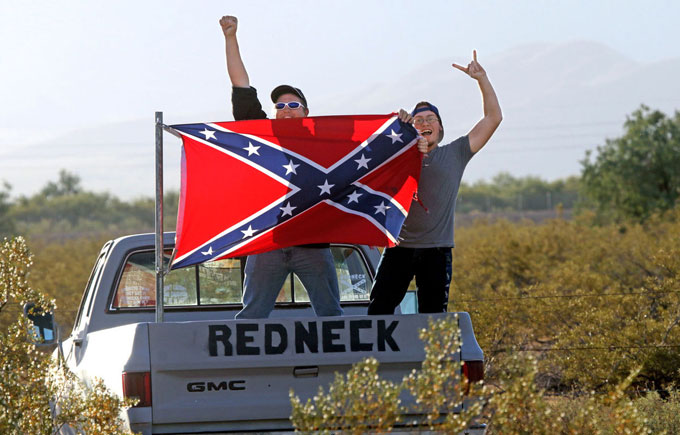Monterey County’s move to rename Confederate Corners, the isolated intersection south of Salinas, California restyled as Rebel Corners in The Wayward Bus, has renewed interest in John Steinbeck’s 1947 re-imagining of Plato’s Ship of Fools allegory, from Book VI of The Republic. Located on Highway 68 in unincorporated Monterey County, Confederate Corners got its name during the Civil War, when a handful of Southern sympathizers proposed seceding from California as a mark of solidarity with the Confederate States of America. Except for informed readers of The Wayward Bus, the Monterey County ranchers’ mini-rebellion was largely forgotten until controversy over the removal of racist flags and statues in several states of the former Confederacy erupted, post-Charlottesville, into Trumpian rhetoric around issues of ethnicity, immigration, and loyalty to the flag. Like the Ship of Fools metaphor embedded in Steinbeck’s neglected novel—which few critics recognized, then or now—the recent news from Monterey County is replete with the kind of irony that appealed to the author, a big-tent American who began writing The Wayward Bus in and about Mexico.
- Home
- Books
- Life
- Music & Media
- Places & Events
- Politics & Religion
- April 26, 2024
About John Steinbeck

Most read American writer of the 20th century. Born in California. Died in New York. Romantic. Realist. Rebel. More about John Steinbeck
FacebookTwitterLinkedInGoogle+ PinterestMySpaceStumbleUponYouTubeStay In Touch
Receive email updates and stay in touch with SteinbeckNow.com
Recent Posts
- New Video from San Jose State University on John Steinbeck: A Writer’s Vision
- Celebrate! Western Flyer Returns to Monterey Bay
- Henry Fonda’s Daughter, Jane Fonda, to Receive 2023 John Steinbeck Award
- A Chance Christmas Dinner with John Steinbeck in 1947
- Saved! John Steinbeck’s Retreat in Sag Harbor
- Celebrating Woody Guthrie’s Grapes of Wrath Connection
- John Steinbeck Haunts Malcolm Harris’s Palo Alto
- San Jose State Hosts Steinbeck Conference
- For John Steinbeck, the Rains in Pajaro Hit Home
- Photo Inspires Sumi Ink Portrait by Eugene Gregan


Fascinating tidbit, team JS. I wonder what JS himself would say about the renaming. Do you think he’d be in favor of erasing that particular place-name reference, since it doesn’t really valorize the CSA in the way that monuments (e.g., Stone Mountain, R.E. Lee statues) do?